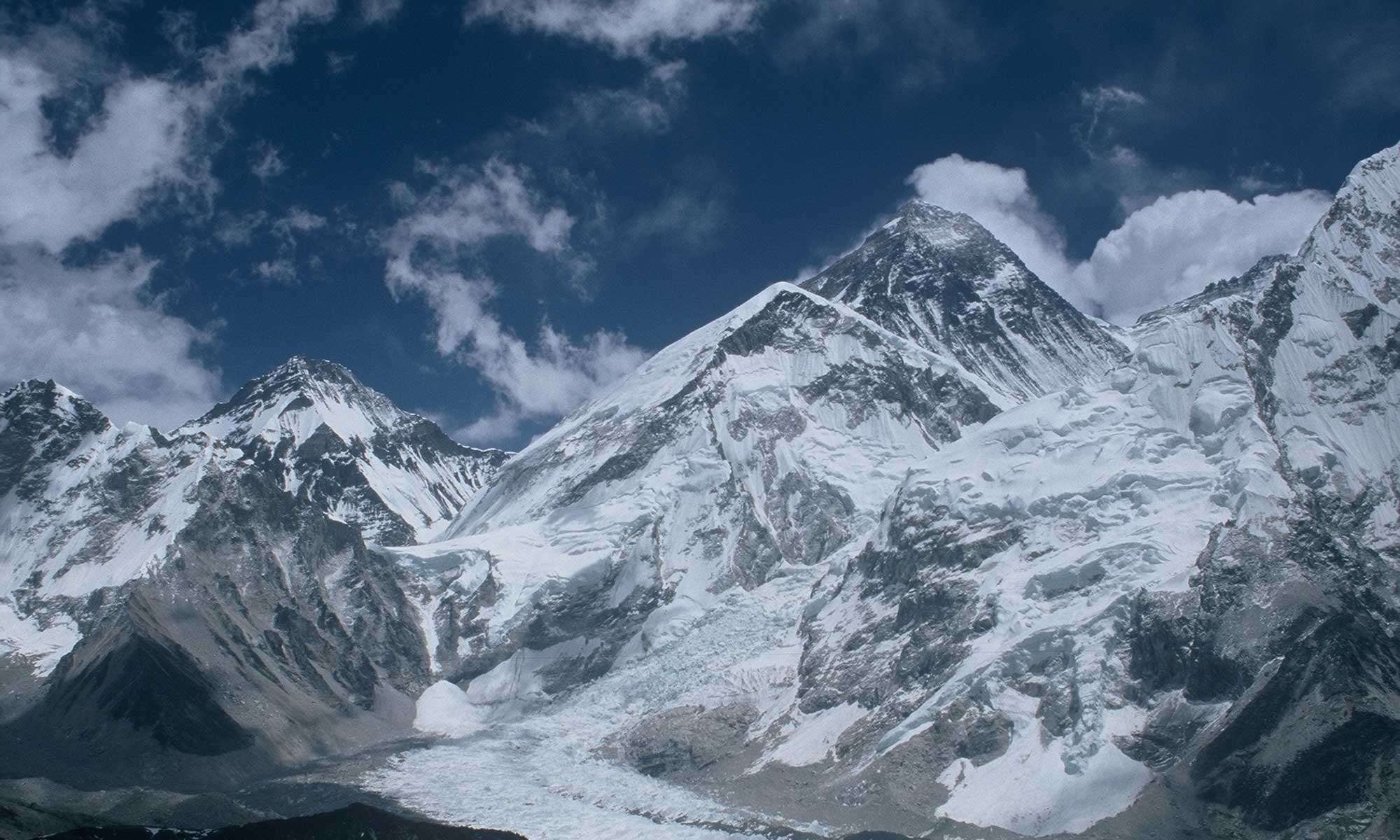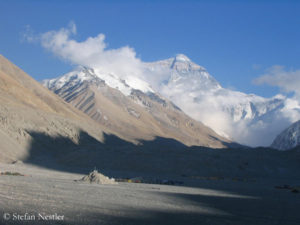The “sprinter”, as he was once called, will return to Mount Everest. In spring 2022 Marc Batard wants to climb the highest mountain on earth without bottled oxygen – at the age of 70. If he succeeds, Marc would then most likely be by far the oldest climber on the roof of the world without using a breathing mask. So far, this Everest record is held by the Italian Abele Blanc, who reached the highest point on earth in 2010 at the age of 55 years and 264 days. For years, Batard had completely retired from high altitude climbing and devoted himself to painting.
Four 8000ers in less than ten months
Especially at the end of the 1980s, Marc made the headlines. He was the first person to climb Everest in less than 24 hours – without bottled oxygen. In September 1988 it took Marc only 22.5 hours to climb from the base camp on the south side of the mountain in Nepal to the highest point at 8,850 meters, which earned him an entry in the Guinness Book of Records. At that time, he was at the zenith of his performance: Within less than ten months, he scaled four eight-thousanders, all without bottled oxygen.
Batard first succeeded in a winter ascent of Dhaulagiri in December 1987. In April 1988 he added the first traverse of Makalu: Marc climbed alone via the West Pillar to the summit and then down the normal route, the Northwest Ridge, to base camp. The ascent took him only 18 hours. In preparation for Everest, Batard scaled Cho Oyu in only 19 hours in early September 1988. After his record coup on Mount Everest, the 1.67-meter tall Frenchman weighed only 46 kilograms. Marc had climbed his first eight-thousander, Gasherbrum II in Pakistan, already in 1975, opening a new route via the South Ridge. Aged 23, Batard was then the youngest climber ever to scale an eight-thousander without bottled oxygen.
Two experienced companions
Hardly anyone knows how it feels to climb Everest without breathing mask as well as Batard does. The Frenchman has already tackled Mount Everest eight times: six times on the Nepalese south side, twice on the Tibetan north side. He never used bottled oxygen. After 1988 he achieved a second Everest summit success in 1990.
In spring 2022, Marc wants to climb via the north side – to avoid traffic jams on the summit ridge, as the 68-year-old says. Batard has brought two extremely experienced mountain guides on board for his project: the 43-year-old Pasang Nuru Sherpa from Nepal, who has already scaled Everest eight times, and the 44-year-old Muhammad Ali Sadpara, currently Pakistan’s most successful high-altitude climber.
Marc, you have already tackled Everest eight times without breathing mask, twice you have reached the summit. Why do you want to do this to yourself again when you are 70?
Because I’m in great shape and I want to use the media coverage of this ascent to find funding to create the first school for very high mountain guides. This school (Himalayan International Mountaineering School – HIMS – in Nepal) will be realized by the fifteen countries that have summits above 6000 meters. The main goal is to reduce the too many accidents of professionals and amateurs.
You were already on Everest in the 1980s, you experienced the “golden times” when new routes were opened on the highest mountain on earth. In 2009 and 2010, you have also experienced commercial climbing on Everest. From your point of view, how has the adventure factor on Everest changed?
In my opinion, the commercialization of Everest and other summits is very negative for the mountain and the poor people who live in these countries. They are even poorer because of mismanaged tourism. This is a very broad subject that interests me very much.
Last winter, you scaled the 6,962-meter-high Aconcagua, the highest mountain in South America, twice in four days. How did it feel to breathe thin air again?
I was extremely happy to see that my physiology at very high altitude is still very good and that I will therefore be able to climb to 8000 meters relatively easily and fast.
You were once known for your speed on the highest mountains in the world. Can you, a good 30 years later, also slow down or does it still drive you up the mountains fast?
I want to take my time but nevertheless climb as fast as possible for safety reasons.
It will be no different for you: Age takes its toll on the body. How do you prepare for the extreme stress of an ascent without bottled oxygen?
Since I got the idea to return to Everest for my 70th birthday I have resumed physical training, I have lost weight, I have done winter climbs in the Alps, on Kilimanjaro and Aconcagua. And now we are heading for Annapurna. To tackle all this together with my two rope partners makes me mentally very happy.
With Pasang Nuru Sherpa and Muhammad Ali Sadpara you have two very experienced mountain guides from Nepal and Pakistan at your side. Why did you choose these two guides?
I chose Pasang and Muhammad for their physical, moral and human abilities.
To prepare for Everest in 2022, you want to climb Annapurna next fall and Makalu in spring 2021, both without bottled oxygen. Do you expect that you might have to change your plans again because of the corona crisis?
Yes of course, nevertheless I’m still very optimistic to be okay in May 2022.







The good heart man
I think it’s just awesome that you are so enthusiastic, that you climb mountains to prepare, that you make plans to climb more to get even better prepared and are confident to see your adventures through. Wow! I salute you.